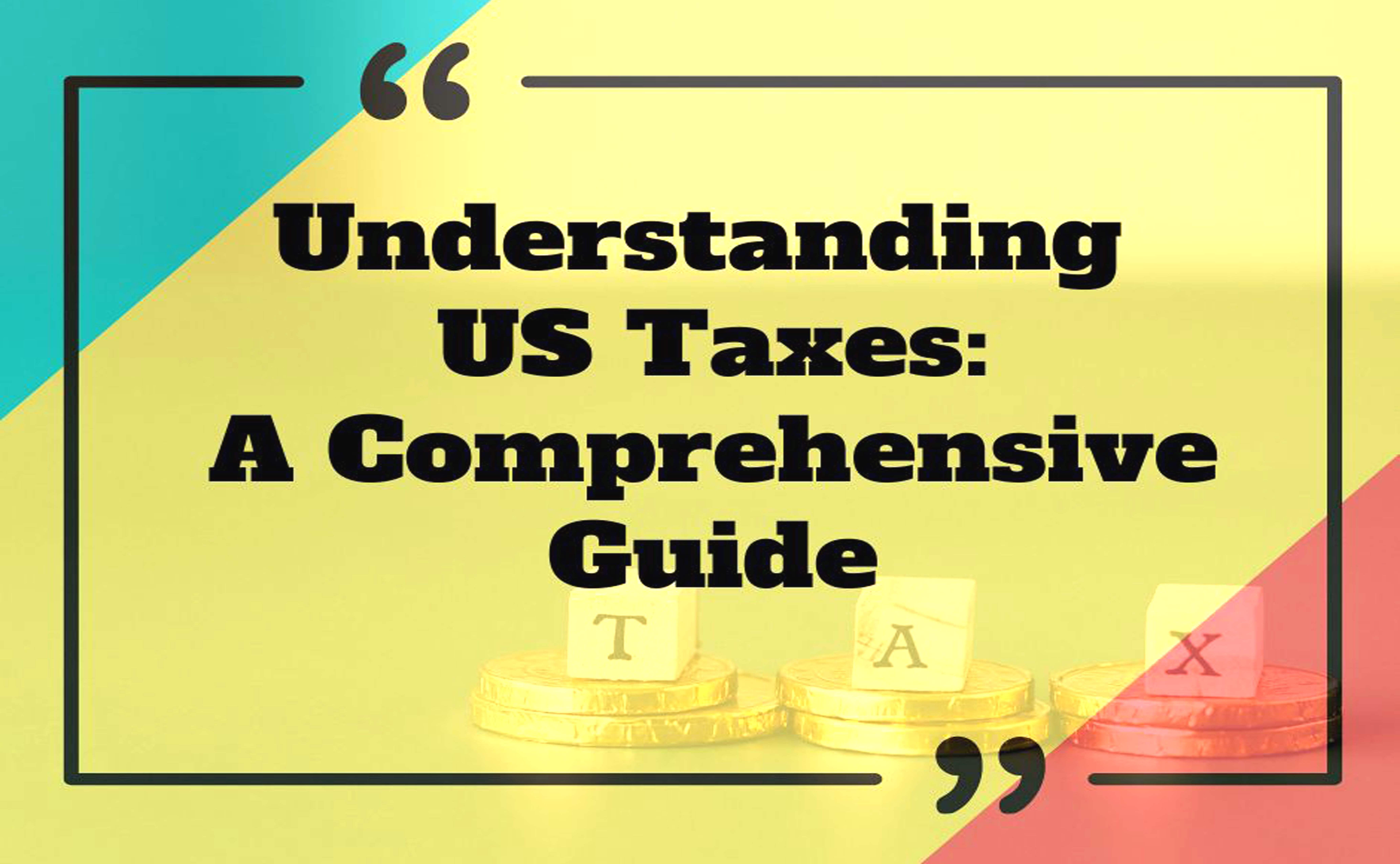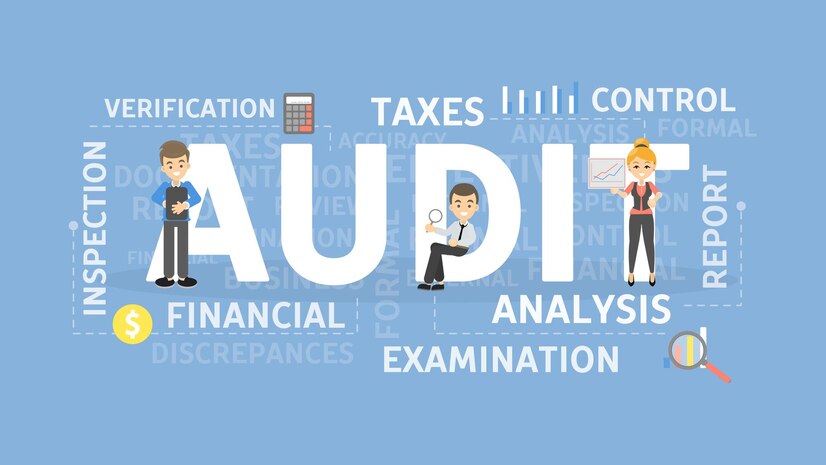Top Accounting Tips
This blog provides essential accounting tips to help US businesses stay tax-ready. It covers topics such as organizing financial records, leveraging t...

Taxes can be complex and intimidating, but understanding the basics can help you navigate the tax system more effectively. This comprehensive guide will walk you through the essential aspects of US taxes, from the different types of taxes to tips on filing your returns.
The United States has a multifaceted tax system that includes various types of taxes:
Income Tax: The federal government, most states, and some local governments tax personal and business income.
Federal Income Tax: The IRS (Internal Revenue Service) collects federal income tax based on a progressive tax system, where higher income levels are taxed at higher rates.
State Income Tax: Most states also have their own income taxes, with rates and rules that can vary widely. Some states, like Florida and Texas, do not have state income tax, which can be an important consideration for individuals and businesses when choosing where to live or operate.
Local Income Tax: In addition to state taxes, some cities and municipalities also impose a local income tax. For instance, cities like New York City and Philadelphia have their own income taxes.
Payroll Tax: Employers and employees share the responsibility for Social Security and Medicare taxes. These are also known as FICA (Federal Insurance Contributions Act) taxes.
Social Security Tax: This tax funds the Social Security program, providing benefits for retirees, the disabled, and survivors of deceased workers.
Medicare Tax: This tax supports the Medicare program, which offers health insurance to people aged 65 and older and to some younger people with disabilities.
Sales Tax: State and local governments impose sales tax on the sale of goods and services. The rates can vary significantly depending on the state and locality.
State Sales Tax: Each state sets its own sales tax rate. For example, California has one of the highest state sales tax rates, while states like Delaware do not impose a sales tax.
Local Sales Tax: In addition to state sales tax, many local jurisdictions impose their own sales taxes, which can vary widely. Some cities have significantly higher combined state and local sales tax rates.
Property Tax: Local governments levy property taxes on real estate properties. These taxes fund public services like schools, roads, and emergency services.
Assessment: Property taxes are based on the assessed value of a property. Local assessors determine this value, which may be different from the market value.
Rates: Property tax rates can vary widely by location. Some states, like New Jersey, have higher property tax rates, while others, like Hawaii, have lower rates.
Estate and Gift Tax: The federal government taxes large estates and significant gifts. States may also have their own estate or inheritance taxes.
Estate Tax: This tax is imposed on the transfer of the estate of a deceased person. The federal estate tax only applies to estates exceeding a certain value (e.g., $11.7 million in 2021).
Gift Tax: This tax applies to the transfer of money or property to another person without receiving anything of equal value in return. The annual exclusion for the gift tax is a certain amount per recipient (e.g., $15,000 in 2021).
The US federal income tax system is progressive, meaning that the tax rate increases as your income increases. Here’s a detailed look at how tax brackets work:
Taxable Income: Your taxable income is your total income minus deductions and exemptions. This includes wages, salaries, bonuses, interest, dividends, and other forms of income.
Tax Rates: There are several tax brackets, each with a different rate. For example, in 2024, tax rates might range from 10% to 37%. The exact brackets and rates can change from year to year due to inflation adjustments and tax law changes.
Calculating Taxes: Only the income that falls within each bracket is taxed at that bracket's rate. For example, if you fall into the 24% tax bracket, not all of your income is taxed at 24%; only the portion within that bracket is. This means that your effective tax rate (the average rate you actually pay) is lower than your marginal tax rate (the rate on your last dollar of income).
Filing your tax return can seem daunting, but breaking it down into steps can help:
Gather Documents: Collect all necessary documents, such as W-2s, 1099s, and records of other income, deductions, and credits. Organizing your documents early can reduce stress and ensure you don’t miss any important information.
Choose a Filing Status: Your filing status (single, married filing jointly, married filing separately, head of household, or qualifying widow(er)) affects your tax bracket and eligibility for certain credits and deductions. For instance, head of household status can offer tax benefits for single parents supporting a dependent.
Complete the Forms: Fill out the appropriate tax forms. Most individuals use Form 1040. You might need additional schedules if you have certain types of income or deductions.
Form 1040: This is the main form used to file individual income tax returns. It includes sections for personal information, income, deductions, credits, and payments.
Schedules: Additional forms like Schedule A (itemized deductions), Schedule B (interest and ordinary dividends), Schedule C (profit or loss from business), and others might be needed depending on your financial situation.
Claim Deductions and Credits: Deductions and credits can significantly reduce your tax bill. Common deductions include mortgage interest and charitable donations. Credits, like the Earned Income Tax Credit (EITC), can also provide substantial savings.
Standard Deduction: This is a fixed amount that reduces your taxable income. The amount varies depending on your filing status.
Itemized Deductions: Instead of taking the standard deduction, you can choose to itemize deductions if they exceed the standard deduction. Common itemized deductions include mortgage interest, state and local taxes, medical expenses, and charitable contributions.
Tax Credits: Credits reduce your tax bill dollar-for-dollar. Some notable credits include:
Earned Income Tax Credit (EITC): For low- to moderate-income working individuals and families. The amount varies based on income, filing status, and number of dependents.
Child Tax Credit: For families with qualifying children. The credit amount depends on the child’s age and the family’s income.
Education Credits: Such as the American Opportunity Credit and Lifetime Learning Credit. These credits help offset the cost of higher education.
Review and Submit: Double-check your information to avoid errors. You can file electronically through the IRS’s e-file system or by mailing your return. Filing electronically is generally faster and can reduce the chances of errors.
Maximizing deductions and credits can lower your tax liability:
Standard Deduction vs. Itemized Deductions: The standard deduction is a flat amount that reduces your taxable income. Alternatively, you can itemize deductions if they exceed the standard deduction. Common itemized deductions include:
Mortgage Interest: Interest paid on a mortgage for your primary residence can be deducted.
State and Local Taxes (SALT): You can deduct state and local income, sales, and property taxes, up to a limit (e.g., $10,000 in 2021).
Medical Expenses: Out-of-pocket medical expenses exceeding a certain percentage of your adjusted gross income (e.g., 7.5%) can be deducted.
Charitable Contributions: Donations to qualified charitable organizations can be deducted. Ensure you have proper documentation for any contributions.
Tax Credits: Credits reduce your tax bill dollar-for-dollar. Some notable credits include:
Earned Income Tax Credit (EITC): For low- to moderate-income working individuals and families. The amount varies based on income, filing status, and number of dependents.
Child Tax Credit: For families with qualifying children. The credit amount depends on the child’s age and the family’s income.
Education Credits: Such as the American Opportunity Credit and Lifetime Learning Credit. These credits help offset the cost of higher education.
Saver’s Credit: For low- to moderate-income individuals who contribute to retirement accounts like IRAs and 401(k)s.
Effective tax planning can help you minimize your taxes and avoid surprises:
Stay Organized: Keep detailed records of your income, expenses, and tax documents throughout the year. This includes receipts, bank statements, and tax forms.
Maximize Retirement Contributions: Contributions to retirement accounts like 401(k)s and IRAs can reduce your taxable income. For example, contributions to a traditional IRA are deductible if you meet certain income requirements.
Consider Tax-Advantaged Accounts: Health Savings Accounts (HSAs) and Flexible Spending Accounts (FSAs) offer tax benefits for medical expenses. Contributions to HSAs are tax-deductible, and withdrawals for qualified medical expenses are tax-free.
Review Withholding: Ensure your withholding aligns with your expected tax liability to avoid underpayment penalties or large refunds. Use the IRS’s withholding calculator to check your withholding.
Tax laws are constantly changing, so staying informed is crucial:
IRS Website: The IRS website (irs.gov) is a valuable resource for the latest tax news, forms, and publications.
Professional Advice: Consider consulting with a tax professional, especially if you have a complex tax situation.
Tax Software: Use reputable tax software to help you accurately prepare and file your return.

This blog provides essential accounting tips to help US businesses stay tax-ready. It covers topics such as organizing financial records, leveraging t...

Small businesses in America enjoy various tax benefits that help reduce their financial burdens and support growth. These include deductions for busin...

This blog explores essential tips for expatriates navigating the US tax system, covering residency status, tax treaties, deductions like the Foreign E...

Understanding U.S. tax laws is vital for both compliance and maximizing financial savings. This comprehensive guide simplifies the complexities of the...

Learn how to make tax season stress-free in 2025 with expert tips on staying organized, leveraging deductions, and avoiding common pitfalls. Simplify...

Automation is transforming tax preparation by enhancing accuracy, efficiency, and compliance. Automated systems reduce errors, save time, and stay upd...

Navigating taxes can be challenging for freelancers and small business owners. This blog provides essential tax strategies to maximize savings and ens...

Preparing for a successful financial year-end close is crucial for maintaining the financial health of your business. This process involves reviewing...

This comprehensive guide offers invaluable tips and strategies to help you save on taxes. From understanding deductions and credits to contributing to...

Avoid common tax pitfalls this season! Our latest blog "Top 5 Tax Mistakes to Avoid This Year" offers essential tips to help you file accurately and m...

Effective tax planning is essential for small business owners to minimize liabilities and maximize deductions. In this blog, we explore key strategies...

Unlock the potential for your small business growth by understanding and leveraging various tax credits. This blog explores key tax credits such as th...

Tax season can be overwhelming, but with the right strategies, you can make the most of your tax return. Our comprehensive guide offers valuable tips...

Discover the top tax deductions available for small businesses in the United States. This comprehensive guide helps small business owners navigate the...

Learn everything you need to know about filling out IRS Form 8862 to reclaim disallowed tax credits. Our step-by-step guide will help you navigate the...

In the digital age, protecting sensitive financial information is paramount for tax accounting firms. This blog explores the importance of cybersecuri...

This blog provides a comprehensive guide for new taxpayers to navigate the US tax system. It covers essential topics such as federal and state taxes,...

Navigating tax season can be daunting, but an accountant's expertise can make all the difference. This blog explores how accountants help individuals...

Discover how global accounting services can streamline your international business operations. Learn about the benefits, challenges, and why Winx Glob...

Discover the critical importance of historical accounting cleanup in ensuring financial accuracy and reliability. This blog explores the common issues...

Migrating to a new accounting system can be a complex and daunting task for businesses. This comprehensive guide provides step-by-step instructions to...

Effective management of Accounts Payable (AP) and Accounts Receivable (AR) is critical for maintaining healthy cash flow and ensuring business success...

Discover the essential steps to reclaim your refundable tax credits after they’ve been disallowed. This comprehensive guide will help you navigate the...

Unlock the secrets to a smooth and efficient month-end close process with our essential guide. Tailored for businesses in the USA and Canada, this blo...

Financial modeling is a vital tool for businesses in the USA, enabling informed decision-making, strategic planning, and risk management. This blog ex...

Dive into our comprehensive guide on US tax planning and preparation. Learn about the different types of taxes, effective planning strategies, and ste...

Discover simple and effective strategies to reduce your tax burden in 2025. From maximizing retirement contributions to leveraging tax credits and ite...

Preparing for tax season can be stressful, but with the right approach, you can maximize your savings and streamline the process. This blog provides a...

If you're a small business owner transitioning from Bench Accounting due to its shutdown, don't worry—Winx Global has you covered. This blog outlines...

As bench clients transition to wind energy, this blog explores the reasons behind the shift, the steps involved in making the change, and real-world e...

Explore the impact of Bench Accounting's sudden shutdown on your business, including data access issues, bookkeeping interruptions, and tax preparatio...

Discover how to navigate the sudden shutdown of Bench Accounting. This comprehensive guide covers the impact on businesses, immediate steps to secure...

Discover how you can maximize your tax savings with our comprehensive guide. Learn the ins and outs of key tax deductions and credits that can signifi...

Explore how to reclaim your tax credits using IRS Form 8862. This guide covers eligibility, filing steps, common mistakes, and important consideration...

Discover everything you need to know about Schedule C (Form 1040), the essential tax form for sole proprietors. This comprehensive guide covers who ne...

Understanding Tax Form "Schedule A": Discover how to navigate Tax Form "Schedule A" to maximize your deductions and reduce your taxable income. Learn...

Understanding IRS Form W-4: Your Guide to Withholding Allowances Form W-4 is a critical tax document that helps U.S. employees determine how much fed...

Form W-2, also known as the Wage and Tax Statement, is a vital document for U.S. employees and employers. It summarizes an employee's earnings and the...

Discover the top tax deductions for 2024 and learn how to maximize your savings! Our comprehensive guide covers key deductions, from standard and home...

This blog provides actionable strategies to save on taxes in the USA, including maximizing retirement contributions, leveraging health savings account...

Tax season can be confusing, but understanding the various U.S. tax forms is crucial for filing accurately and maximizing your returns. This comprehen...

This comprehensive guide simplifies tax season by exploring the various tax deductions and credits available on IRS Form 1040. Learn how to reduce you...

Dive into this comprehensive guide on IRS Form 1040, the key to filing your federal income taxes. Learn about its history, sections, important deadlin...

Taxation is the process by which governments collect revenue from individuals and businesses to fund public services and infrastructure. There are var...

"Mastering Tax Preparation: Strategies for U.S. Taxpayers" Get ready for tax season with our comprehensive guide on tax preparation tailored for U.S....

Navigating the US tax season can be challenging, but with proper preparation and knowledge, it doesn't have to be. This comprehensive guide covers eve...

Discover the essential guide to 1099 filing requirements and deadlines for 2024. Learn about different 1099 forms, key filing dates, penalties for lat...

USA Tax Advisory: Navigating New Tax Laws for Smart Financial Planning Stay ahead with expert insights on the latest USA tax law changes for 2024. Th...

Join Winx Global as we reflect on a year of growth and express our heartfelt gratitude to our clients, partners, and team members this Thanksgiving.

Winx Global stands out as the premier accounting firm in the US, offering a comprehensive range of financial services designed to meet both personal a...

Winx Global Bookkeeping Services At Winx Global, we provide professional bookkeeping and accounting services designed to support small businesses in...

Offshore Accounting Partner: A Strategic Move for Business Growth Partnering with an offshore accounting firm can provide businesses with cost savi...